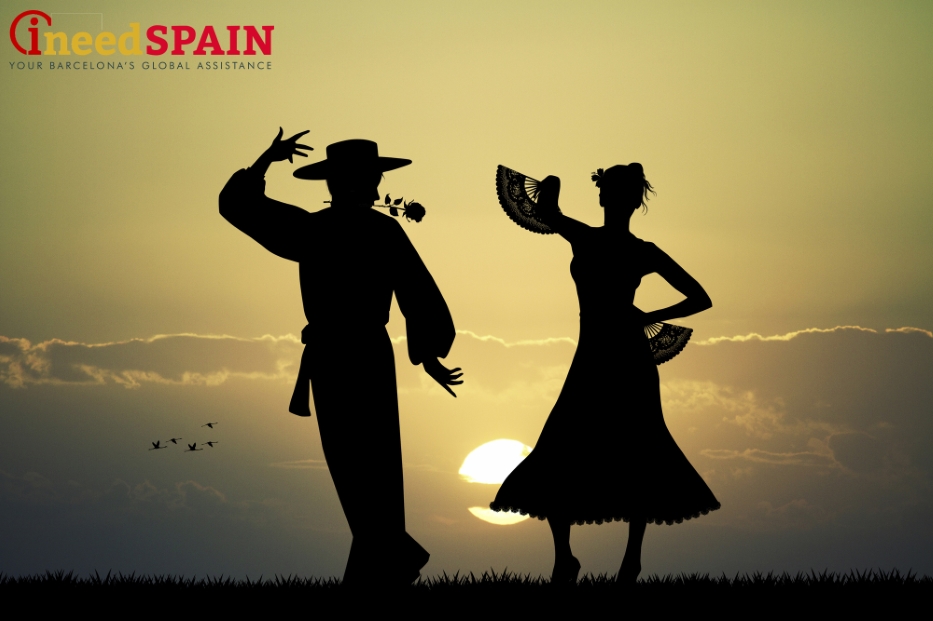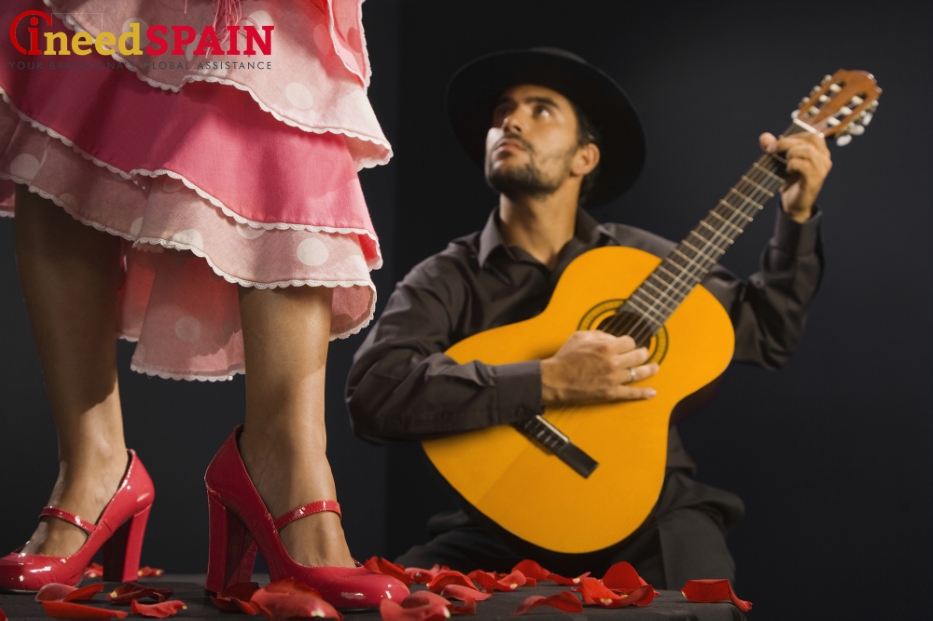
Flamenco encompasses dozens of different cultures and styles. In spite of the fact that on a global scale, today flamenco is considered to be an element of predominantly Spanish culture, many people maintain that this dance originally was introduced by gypsies who entered Spain, bringing with them this dance style. As early as the XV century, after the collapse of the Byzantium Empire, Roma peoples began a massive migration from their northern Indian homelands to the regions of Southern Spain (and primarily to Andalucia), where they would settle along the coast. There, the people assimilated local musical traditions – Mauritanian, Jewish, Roma, and Spanish elements – that finally culminated in the symbiosis that we know as flamenco today. Flamenco entered into mainstream culture only in the beginning of the XIX century, during the period when the massive persecution of gypsies had finally seemed to end, and subsequently, flamenco dancers emerged from the “underground” cultural scene and began to perform freely around the country. Nowadays, the culture of flamenco includes over 50 styles and branches, the borders of which arguably are rather blurred. In 2010, UNESCO awarded flamenco intangible world heritage status.
The history of the tablao de Carmen flamenco show is closely related to the world-acclaimed flamenco star Carmen Amaya, originally from Barcelona. One of the most renowned performance venues in the city bears her name. Carmen Amaya was born to a Romani family in one of the poorest districts of coastal Barcelona. Since her early childhood, she was known to dance accompanied by her father’s guitar in “Les Set Portes,” a restaurant in Barcelona. Even at that time, many people were awed by the young girl’s unique dancing techniques, the extremely emotional manner she used to convey the moods of the dance, as well as her striking appearance, all of which would convert her dancing into a show of pure magic. Sebastian Gash, Catalonian arts critic, “discovered” the future star when he saw her dancing in “Les Set Portes.” Amaya’s Madrid debut in 1923 and her breath-taking dance before the Spanish King Alfonso XIII at the inauguration of the Spanish section of the international exhibition of 1929 were followed by a soaring dance career. Carmen Amaya toured all over the world, giving incredible performances across Europe, Latin America, the U.S.A., and Africa. She starred in several movies, and after returning to her native country, she was the main attraction of all her flamenco shows up to the time of her death.
Tablao de Carmen boasts almost 30 years of history and offers a flamenco show in Barcelona that attracts thousands of spectators annually. Over its years of operation, the small stage for professional dancers’ performances has turned into a fully-fledged performance venue that still retains its unique atmosphere and original program. “Tablao” (or, more precisely, the word “tabla”) can be translated from the Spanish as “board”—that is, the base for flamenco dancers’ stage. At the tablao, you will see the contemporary, world-famous flamenco stars sharing their exceptional talents. Almost from its inception, the tablao de Carmen flamenco show has been recognized as one of the best stages in the world for traditional, authentic flamenco.
Review of Tablao de Carmen in Barcelona

- Tablao de Carmen is located in the Andalucían district of the Spanish village (also known as “Poble Espanyol”), on the top of Montjuïc. In other words, this is the place where you are likely to see major Barcelona landmarks in close proximity. The Spanish village was built in the late 1920’s in conjunction with the international exhibition. Today, the village is a vivid symbol of the wealth and beauty of Spanish architecture. You can reach the tablao in several ways: by taking buses 13, 23, or 150 (including Bus Turistic and Barcelona City Tour Bus) to the bus stop of “Poble Espanyol,” or by taking metro lines L1 or L3 to Plaza de Espanya, after which you will walk about 20 minutes across the Spanish village.
- Tablao de Carmen was built as an edifice comprised of three halls, two of which contain a stage and tables for the visitors, while the third, modeled after a traditional patio of Córdoba, represents a cozy space with a small restaurant.
- Spectators of tablao de Carmen flamenco show are sure to love the wide gastronomic selection described over four different menus: the wine menu, “Tapas” menu, the menu “Carmen,” and menu “Degustation.” In addition to these four, vegetarians are welcome to choose from a special menu with a choice of courses, and kid have their own menu as well. The cost of tickets depends on the chosen menu type and fluctuates from 40 to 95 euros.
- The show is open to the public from Tuesday to Sunday. The first performance begins with dinner at 18:00, and the performance starts at 18:45. The later option is to have dinner at 20:30 and view the performance at 21:15.
As the reviews of tablao de Carmen attest, the dancers’ unique style, the chords of authentic music, and the majestic spirit of the Iberian cultural menu enable visitors to plunge into Spanish history and learn fascinating facts about the culture and traditions of Spain.
The specialists of “INEEDSpain” service center will gladly help you reserve and procure tickets for any events you would like to attend in Spain. We can help you choose the best entertainment events in the city as well as assist you in choosing the most convenient option for individual visits or group tours.





